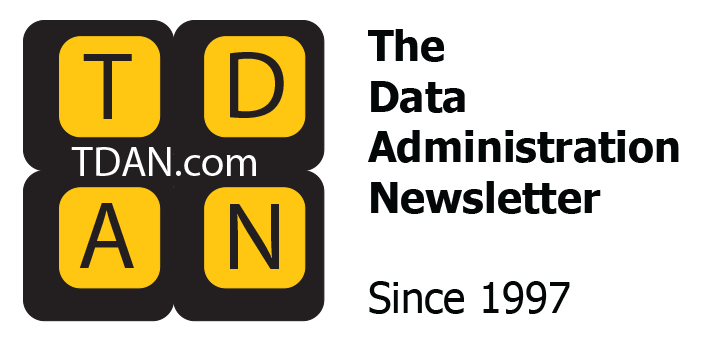
In today’s data-driven landscape, organizations have a wealth of information at their fingertips — but unlocking its full potential is a complex challenge. Many struggle to effectively leverage data for AI, analytics, and decision-making, often hindered by issues like accuracy, availability, and security. For CIOs and CDOs, prioritizing and addressing these obstacles is mandatory. From implementing robust data processes to creating a strategic data operating model that incorporates DataOps, governance, and talent, data leaders have a unique opportunity to transform raw data into a powerful asset. I spoke with data professionals at #CIOChat to learn more. This article explores what it takes to truly exploit data.
What Most Holds Your Organization Back
Many organizations today are held back in leveraging data for analytics, artificial intelligence, and intelligent agents due to a combination of cultural, organization, and technical challenges. Culture and readiness remain a significant challenge. In many cases, early adopters have embraced data-driven approaches. However, middle and late adopters lag, relying heavily on traditional tools like spreadsheets. This can stymie innovation and reduce the organization’s overall agility in harnessing data. Moreover, without strong incentives and clear change management strategies, organizations may resist or be indifferent to new data initiatives.
“Data quality and data literacy are additional hurdles,” says Manhattanville College CIO Jim Russell. Often, he says, data that serves well enough for transactional purposes is inadequate for analytical or AI-driven applications. For example, simple errors in something as fundamental as zip codes can cascade into significant inaccuracies. Beyond cleanliness, data hygiene — including archiving or removing outdated or unused data — is needed. However, even pristine data will fail to deliver value if the workforce lacks the data literacy and fluency to enter, maintain, interpret, and utilize data effectively. Training and upskilling efforts in this area are often neglected, leaving many underprepared for the data age.
Then there’s the “challenge of organizational friction,” says former Greenwich Associates CIO, Issac Sacolick. While early adopters may have been leveraging advanced analytics or AI for years, it’s often difficult to drive meaningful change across the entire organization. Teams not incentivized or empowered to evolve may default to entrenched methods, creating bottlenecks and hindering progress.
Finally, technological and process readiness is crucial. Even with the right culture and data quality, organizations need effective strategies to build trust in data accuracy, lineage, and provenance. This means establishing clear standards for data ingestion, normalization, and integration across diverse sources. Without these, data remains siloed and inconsistent, undermining the effectiveness of any AI or analytic solutions. For organizations to overcome these challenges, they must adopt a value-driven, purpose-centered approach to data, investing in both people and technology. They need to focus not only on obtaining high-quality data, but also on fostering a culture that values and trusts data-driven decisions.
Highest on the CIO/CDO Fix List
For CIOs and CDOs aiming to exploit data effectively, data literacy should be a top priority. Building a culture where employees understand both the strengths and limitations of their data enables them to work around challenges and collaborate meaningfully. When the workforce knows what’s possible with data, they can help the organization move forward despite imperfections. Here, it is important to focus on early, high-impact use cases that demonstrate the value of data and highlight the potential improvements if data quality were enhanced.
From a CIO’s perspective, Fractional CIO Joanne Friedman says, “Clarity on use cases is essential. Every data initiative must answer the why — why collect, process, or analyze this data? Without a clear business purpose, efforts can flounder. For CDOs, the focus should be on ensuring data voracity, particularly through provenance and lineage.” Trust in data starts by knowing its origins and transformations, helping build a foundation for all other improvements like accuracy, consistency, and availability.
Ultimately, accuracy and consistency are must-haves for any data strategy. However, CIOs and CDOs should focus on demonstrating the strategic importance of data, asking what metrics matter to the business and who needs visibility into them. Addressing these foundational questions paves the way for a sustainable, data-driven culture. FIRST CIO Deb Gildersleeve says, “Accuracy and consistency should be fixed no matter what. Beyond that, CIOs/CDOs may need to demonstrate how and why the business might use data.”
Processes to Fix Data
To produce better data and establish data readiness, CIOs and CDOs need to implement robust data governance processes that are tied directly to business outcomes. A foundational step is to establish key performance indicators (KPIs) that track data quality and maturity over time, helping to ensure that the data available today supports better decision-making tomorrow. The governance framework should also include data lifecycle management practices, ensuring that data entry, maintenance, and expiration processes are all clearly defined and followed. With effective data governance, organizations can more confidently rely on their data to drive strategy and operations.
Additionally, CIOs and CDOs should look at data ingestion and normalization processes to handle diverse data types effectively. But they must go further to emphasize data contextualization for better insights. Leveraging a framework like return on data can be valuable here as it connects data initiatives to measurable business impact, guiding data prioritization efforts. Product management practices, such as identifying value opportunities, tracing them back to data needs, and managing data debt, are essential to focus on the most critical data improvements. Combining agile methods with feedback loops ensures that data initiatives remain responsive to evolving business needs, driving continuous improvement and sustained data literacy across the organization.
Creating a Data Operating Model
A data operating model for CIOs or CDOs should be tailored to the organization’s unique needs and strategic goals, but some core elements are generally essential. Governance, Risk, and Compliance (GRC) is a part of this as it ensures that data handling aligns with regulatory requirements and internal standards while also addressing data quality, privacy, and security. This includes defining data ownership, access controls, and protocols for data retention and disposal, all of which mitigate risk and protect an organization’s assets.
Beyond GRC, the model should incorporate DataOps and operationalization processes to streamline data workflows and enable faster, more reliable data delivery. DataOps practices, inspired by DevOps, enhance collaboration between data engineers, scientists, and IT teams, facilitating rapid data integration, testing, and deployment. Provenance and lineage tracking should also be a priority, as they ensure trust in the data by providing transparency into its sources, transformations, and usage across the organization. Additionally, including value qualifiers — metrics that assess data’s business impact — can help maintain a focus on high-value initiatives. Finally, developing and attracting data talent is crucial, as skilled professionals are needed to manage, analyze, and drive insights from data. With these elements, CIOs and CDOs can create a model that balances speed, security, and governance while supporting the organization’s evolving data needs.
Parting Words
In a world where data is an invaluable asset, CIOs and CDOs have a critical role in transforming raw information into actionable insights. By addressing cultural, technological, and organizational barriers, leaders can create a foundation of trust, quality, and accessibility that empowers the entire workforce. Emphasizing data literacy, governance, and purpose-driven strategies ensures that data initiatives align with business goals, fostering a culture that values data-driven decisions. With the right approach, CIOs and CDOs can lead their organizations to harness the full power of data, driving innovation, efficiency, and sustainable growth.
